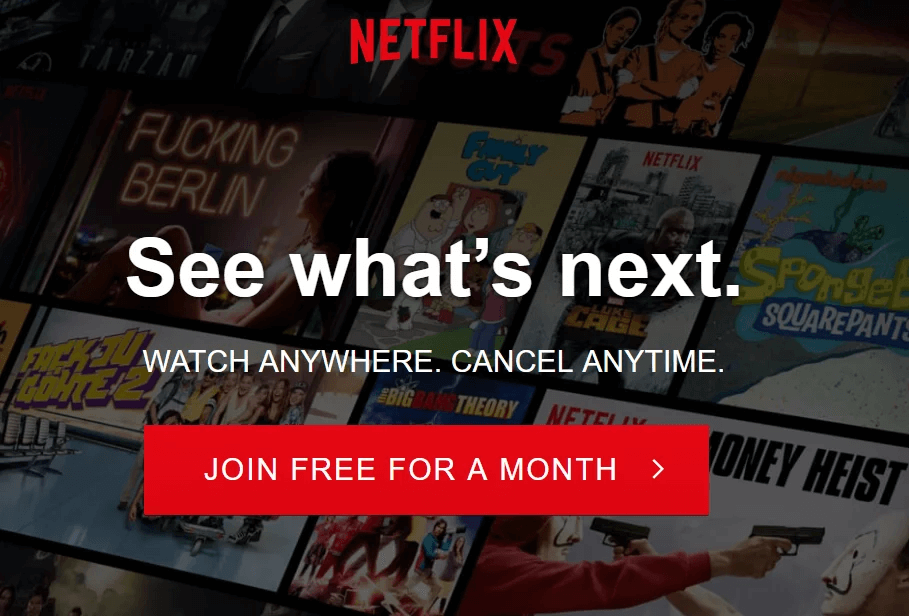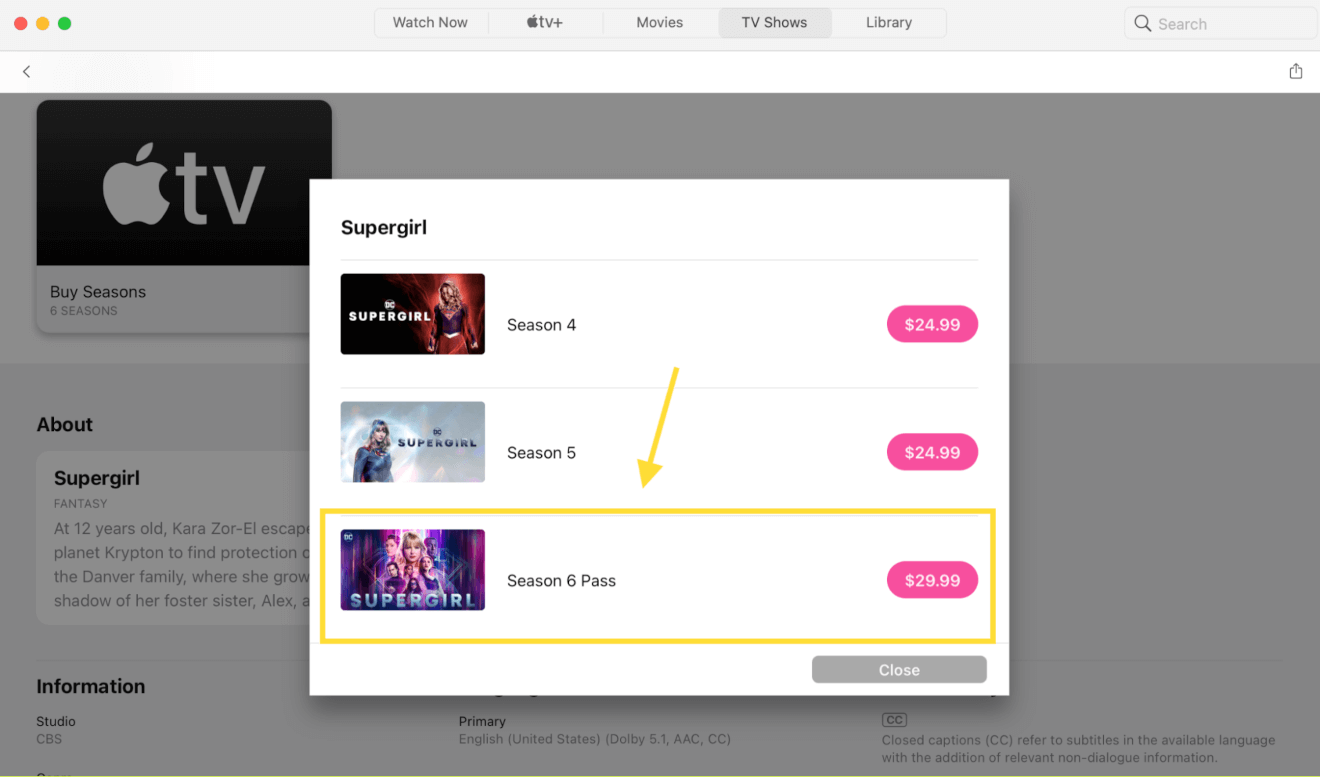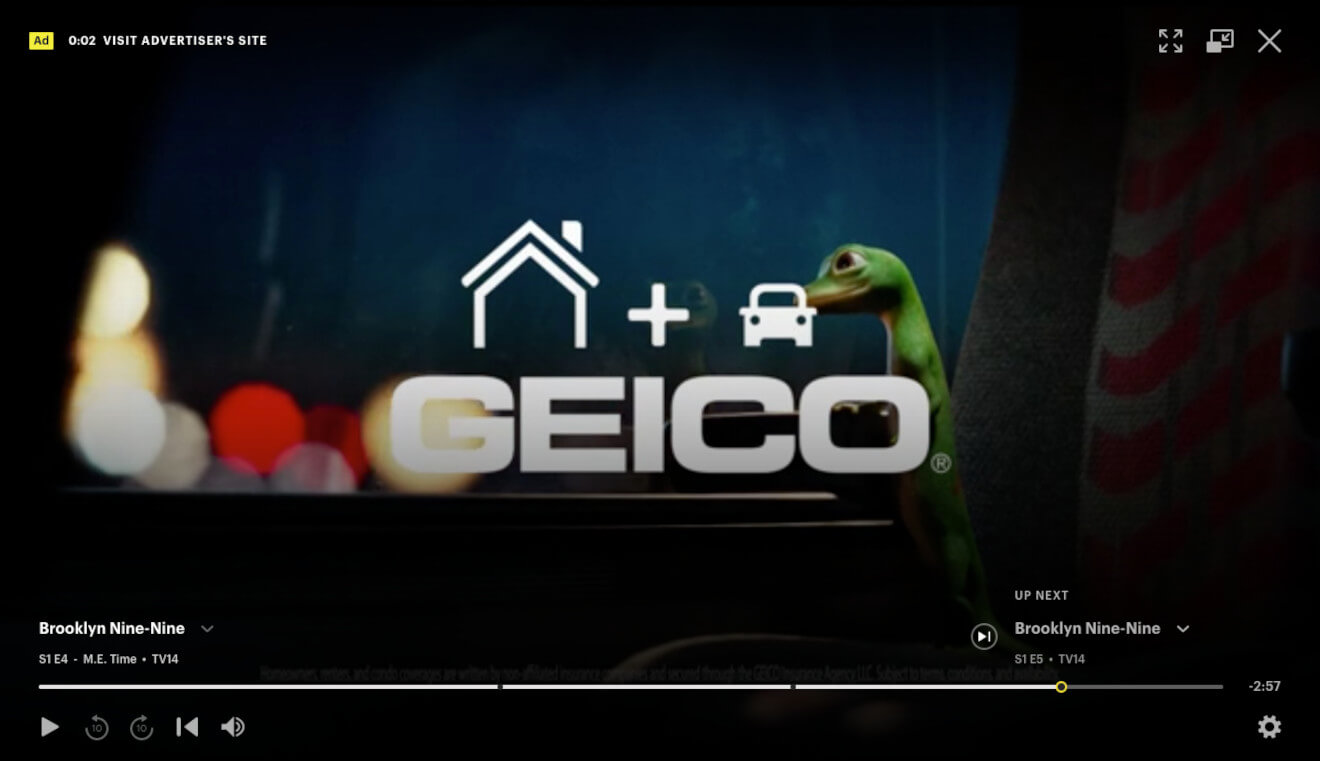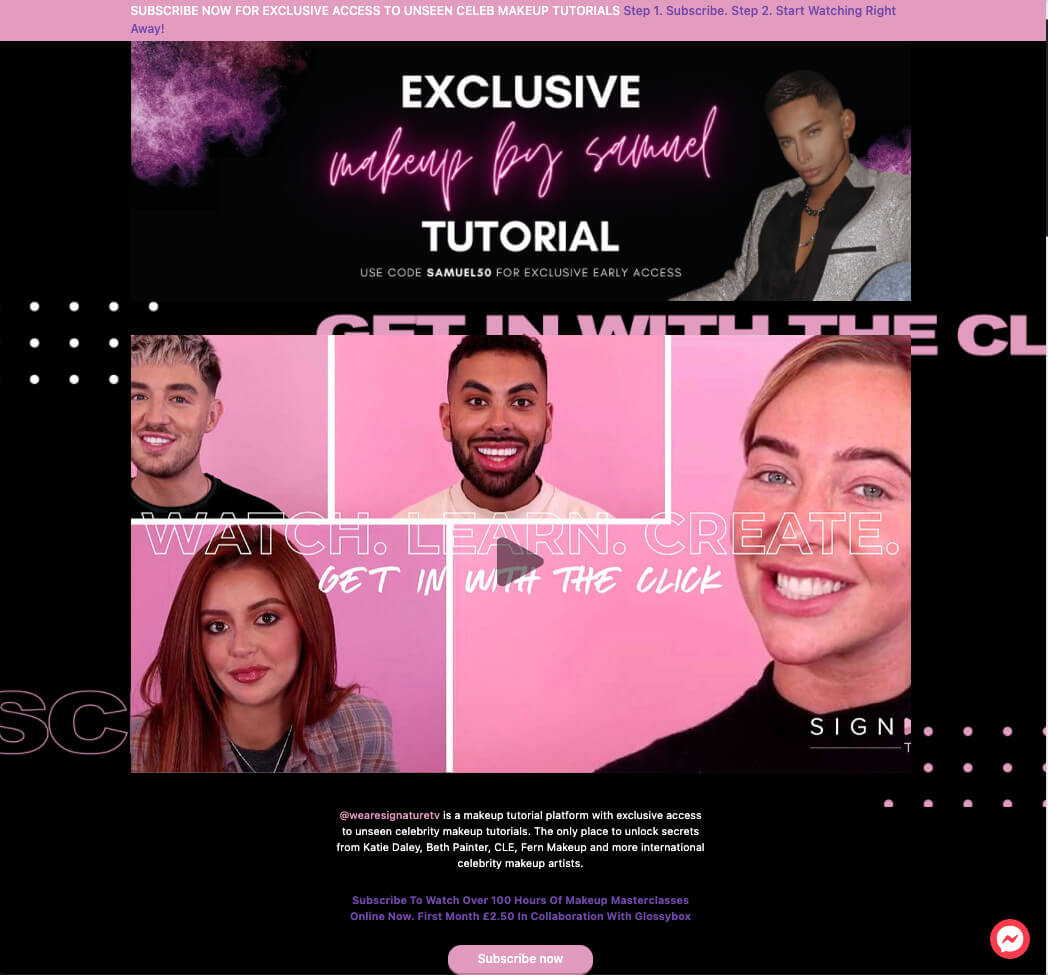Make Money With Adult Movies Easy
Want to monetize your videos but aren't quite sure where to start?
Don't worry, you're not alone.
Since you're here, you probably already know that the video industry is booming. Viewers want more content, so it's a great time to get in on the action and turn your creations into cash.
But there has to be a better way than uploading a video to Youtube and doing… well, whatever YouTubers do to make money, right?
Absolutely.
In 2021, there are tons of ways to run a video business that are more profitable, enjoyable, and consistent than Youtube. These options let you control your content and make the money you deserve.
In this article, we'll show you what video monetization is, the 3 business models you can choose from, and give you an actionable strategy to turn your videos into profit.
No time to read this article now?
Download a free PDF version of this blog post (all tips and links included).
What You'll Learn
Use the table of contents below to navigate through this post:
- What is Video Monetization
- How to Monetize Videos: 3 Profitable Business Models To Sell Videos Online
- Why YouTube Isn't Always The Best Choice
- Which Videos Can Be Monetized?
- How to Monetize Videos Online in 3 Steps
What is Video Monetization?
Video monetization is the process of generating income through the videos you share online on any platform. This is usually achieved through advertising, subscriptions, or direct transactions.
In simpler terms…
Video monetization is getting paid for the videos you create.
You can do this in a number of different ways – which we'll explore later – but the main way you get paid is through "access".
This can be:
- Access to your video content.
- Access to your audience.
- Access to your platform.
Meaning people will pay you to watch your videos or to transmit a message to your audience.
Let's look at some day-to-day examples of this you might be familiar with:
- Access to video content: Buying a new release movie on Amazon Prime Video.
- Access to audience: Companies paying for ad spots in Youtube videos.
- Access to platform: Your monthly Netflix subscription to "access" their video library.
Which brings me squarely to your videos.
To monetize your content you'll need to plan your video strategy accordingly. Which, luckily for you and me, is really easy to do in today's on-demand video world.
(back to top)
3 Profitable Monetization Models To Sell Videos Online
You have three content monetization options to choose from. All these business models center around an idea called Video on Demand (VOD).
VOD means the user can access a video anywhere at any time. No checking the TV guide or waiting for a show to broadcast. It's there at the push of a button.
If you're interested you can learn more about VOD in our breakdown of it here. But all you need to know for now is that it's profitable.
However, the monetization method you choose will dictate just how profitable.
1: SVOD: Subscription Video On Demand
SVOD gives users access to your entire library of video content for a recurring monthly or annual fee.
You'll be familiar with this if you have a Netflix subscription. You pay monthly to watch videos from their library and when you stop paying, you lose access.

Viewers love subscription services because they get the best bang for their buck. These plans let them watch all the video content they want for one easy recurring payment (and there are no annoying video ads.)
This is the most profitable method of making money with your videos.
Why?
When subscribers are happy with your service, they want to keep paying for it. Therefore, each one becomes a reliable source of income.
That makes it your best bet for long-term financial success.
1. Regular Subscription Income Compounds Over Time
Here's how subscription revenue adds up:
Let's say you charge $15 for a monthly subscription service. If 20 people sign up, you've made $300 that month for access to all your videos.
But SVOD income accrues over time, so you continue to make money whether you add new content or not.
For example:
- Month 1: You make $300 from 20 subscribers on your video catalog.
- Month 2: All 20 subscribers are still paying, so you've pulled in another $300. Your total profit is $600.
- Month 3: With the third month of regular subscription income, you've now made $900 on the same video catalog.
That's not even counting income from new subscribers. And that's also not counting the new subscribers who sign up for annual subscriptions upfront!
Over time, as more people sign up, you're making more money per video. And that revenue is consistent and recurring.
2. Subscription Revenue Is More Reliable than Ad Revenue
The main problem with ad revenue is that you're not in control of it. If an advertiser decides to cut their budget or run fewer ads on your service, your profit gets slashed – and you can't do anything about it.
On the other hand, running your own subscription service means you know exactly how and where your money is coming from at all times.
Best of all, when you have predictable recurring income, you can establish a financial plan and set real growth goals to increase your profit.
2: TVOD: Transactional Video On Demand
In the TVOD model, people make a one-time payment to watch a video.
Businesses can choose to let viewers purchase lifetime access or temporary access to content. For example, if you've ever bought:
- an AppleTV Season Pass for your favorite show
- a feature film rental from Sky Box Office
- a Showtime pay-per-view ticket for a live sporting event
…you've experienced TVOD.
You can create accounts and access the platform for free (or cheaply) and then pay only for the videos you decide to watch.

Transactional video is a highly profitable business model for the right market. It works especially well if your videos don't have a specific niche and cover a wide variety of topics and industries.
TVOD can also help content creators boost their profit by selling access to special content, like live streaming events, on top of regular subscriptions.
3: AVOD: Advertising Video On Demand
AVOD is where advertisers pay to put their adverts in front of your audience. It's the classic method YouTube is built around.
When you watch a YouTube video you'll often be presented with an advert at the start or somewhere within the content. For instance, a 30 second Geico insurance commercial appears at several intervals during this video.

The more people who see or interact with the adverts on your videos, the more profitable they are. In this scenario, those with larger follower bases have the potential to earn lots of money.
But video creators don't always see a good return on their investment. Youtube ad revenue is going down, and it's getting harder to make a living using ad-based services.
AVOD is fairly easy and inexpensive to set up. Plus, platforms like Youtube with millions of daily viewers give you the opportunity to build an audience. Depending on your business goals, it could work for you!
Okay – now you're familiar with the big monetization methods. But what is it that makes the YouTube channel route less-than-stellar for content creators?
(back to top)
Why YouTube Isn't Always The Best Choice…
There's no doubt that YouTube is the giant of the video industry. It has arguably helped shift and shape the role of video in our lives, forever.
But it's a hard place to monetize your videos. Why?
Because YouTube is highly competitive. Everyone who has ever wanted to be internet famous or run an AVOD video business is trying their luck there. So, there's a lot of noise.
This is why 96.5% of YouTubers don't make enough money to break the poverty line. It's like trying to get into the NFL or Olympics; only a select few make it.
Even if you do breakthrough you're not in control of your income. It's dictated by:
- Advertiser content guidelines.
- Viewer statistics.
- YouTube's ever-changing monetization rules and eligibility.
This gives advertisers and YouTube the power to cancel sponsorships and completely demonetize your channel, removing your entire revenue stream overnight. Their terms of service even include a vague explanation of how they reserve the right to distribute your videos without paying you for them.
There are content guidelines for any video business. However, YouTube answers to advertisers, so their ultra-strict content guidelines don't provide much security for creators. That's why we're huge advocates of the SVOD and TVOD model – everything is in your control.
To give you a better idea of how this works, we'll explain the basics of content guidelines, and how YouTube's rules compare to those of other hosting platforms.
Which Videos Can Be Monetized?
Like any other business, video monetization does come with some umbrella rules.
Here, we'll explain the nuts and bolts of what content you're actually allowed to make money from in your video business and a few things you'll want to be careful of.
General Content Monetization Guidelines
Monetizing your videos means being aware of global content guidelines (or, rules for what you can and cannot use for profit in your content.)
1. Copyright Ownership
Your videos have to be original and your own intellectual property – this means you can't plagiarize other content or stream other content for profit (like movies or TV shows.)
2. Adult Content
Overly erotic adult subject matter is generally against the rules for most hosts and payment gateways. Some hosts evaluate this content on a case-by-case basis, but if it doesn't have educational value, most companies won't allow it.
3. Controversial Issues
This is a pretty broad category that includes subjects like hate speech, self-harm, promoting illegal activity, and so on. A good rule of thumb is – if you can't talk about it at the dinner table, it's probably not going to work on a video website either.
For many independent hosting platforms, the rules are simple. Each video hosting platform has its own terms of service, so it helps to check out platforms individually for anything you're unsure about.
But on YouTube specifically, they can be vague, confusing, and don't focus on helping you monetize your videos.
YouTube-Specific Monetization Guidelines
YouTube monetization rules include everything listed above in the General Content Monetization Guidelines, in addition to the following:
1. Huge List of Possible Violations
YouTube's lengthy list of AdSense content guidelines includes tons of possible violations. For instance, "Repetitious Content," which they define as "mindless content with low educational value, commentary, or narrative."
This content judgment is really subjective. It also gives YouTube (and advertisers) complete control over your income.
2. Demonetization Without Explanation
YouTube reserves the right to demonetize, suspend, or even shut down channels without explanation if they feel like you've violated their community guidelines.
This leaves content creators with no income and no idea what happened. It also makes the appeal process especially difficult if there's been a mistake.
3. Content Can Be Wrongfully Flagged
Anyone can report a video as a violation of Youtube's content guidelines. Some creators have been the victim of fraudulent reports, resulting in their channels being demonetized.
There's barely any protection for content creators (and their revenue streams.)
At Uscreen we believe in empowering video creators to make the money they deserve for the art they create.
Sadly, that's not going to happen on YouTube. Which brings us to an important question…
How can you create a video business where you're in the driver's seat?
We'll show you!
(back to top)
How to Monetize Video Content Online in 3 Steps
I promised to give you an actionable, YouTube-free video monetization strategy to sell your videos online, and now I'll make good on it.
The next 3 steps will help you create a successful and profitable online video business.
1. Create Your Own Online VOD Platform
The first step is to create a video-on-demand platform, your standalone space to monetize videos.
This is your reserved spot on the internet where people can come to find your videos and access them. Ideally, this is going to be a VOD optimized website where people can easily get to your content on any device.
Having this space will allow you to:
- Set your prices.
- Keep creative control of your videos.
- Stay flexible and adjust your strategy based on your audience's needs.
Basically, you have free reign over your domain. (URL-based pun was totally intended.)
We've got an entire guide on putting this together yourself using a WordPress website, but DIY content platforms take a lot of time and technical skill.
Instead, we recommend using Uscreen's all-in-one platform. You can create a custom website and apps, upload your videos, set your prices, and manage your marketing from one easy-to-use dashboard.
A professional platform helps your business hit the ground running and start monetizing videos right away.
You can find out more about our video monetization services here.
2. Create A Subscription Offer
The best way to monetize your videos right now is the SVOD model. This is because subscriptions provide consistent income in addition to allowing creators to scale their business.
Here's how subscriptions create more revenue over time for the same amount of work:
- Continue making money on your existing videos. Every SVOD user signs up to watch your pre-recorded video library, which means you can generate limitless income on work you've already done.
- Create new videos at your own pace. Since your library is bringing in profit all on its own, you're free to build up your catalog on a schedule that works for you.
Here's a real-life example:
Signature.TV works with world-renowned makeup artists and offers content viewers can't find anywhere else.
This means current users want to keep subscribing and new users continue to sign up, so their existing videos are always generating revenue.

This type of monthly subscription income is passive and consistent. The more subscribers you have, the more this snowballs! But even with just a few people on board paying regular fees, you can generate a lot of income.
Finally, running a subscription service gives you full control of your pricing.
To choose a price point, you can evaluate several factors, such as:
- What is your financial goal?
- What is the average cost of other services in your industry?
- Are you marketing to a broad audience or a smaller niche?
- How much does an alternative to your service cost? (In other words, will your customers save money by choosing you?)
You can keep your fees low and accessible, or you can charge a high-ticket offer. However, most subscriptions sit between $9.99 and $19.99 per month.
Once your subscription plan is in place, you'll be able to do more of what you love – creating.
3. Get On Television!
Once you've developed your offer and converted a few people, you can upgrade your offer to include television. How?
By using OTT apps .
Streaming systems like AppleTV, Amazon Fire, and Roku allow audiences to download OTT apps directly onto their TVs. If your business has an app, it means users can view your videos on TV as well as a web browser. Launching an OTT app for subscribers helps increase your profit.
Why?
Because it lets paying customers watch on all their favorite devices. They want a service that allows them to access content any time, anywhere. OTT apps give them that flexibility, so you can keep the income rolling in.
You can take our quick self-test to see if your business is ready for OTT apps right here.
We've also got some helpful tips on how to market your OTT apps the right way, so you can reach your customers effectively!
Wrapping This Up…
Video monetization is the act of getting paid for the videos you create. And, its reach extends well beyond YouTube.
The most effective way to do this is by creating an SVOD service. These subscription videos allow you to control and increase your income in your way and develop a strong community around your videos.
So where do you go from here? Well, it depends on how you feel:
- If you're still unsure and need to think about it, you can browse our current customers to see how their video websites look and try to envision yourself and your video content in their shoes.
- If you're set on the idea but don't think you can do it, check out the Uscreen Video Business School. It covers everything from A to Z about launching and running a successful video business and will guide you through the process step by step.
- If you're super sold on the idea and want to get started yesterday, you can sign up for a 14-day trial of Uscreen's platform.
- If you have any specific questions that were not answered in this blog post, just give us a shout. We're always happy to help.
But before you go, would you mind telling me why you wanted to monetize your videos in the first place? Tweet us at Uscreentv!
FAQ
What does it mean when a video is monetized?
Video monetization is basically getting paid for the videos you create. People watch, like or subscribe and you get paid a sum of money for it. The more people who watch (or, the more subscribers you have), the more you earn.
What are the YouTube monetization rules?
Minimum eligibility requirements to join must follow all the YouTube monetization policies. Live in a country/region where the YouTube Partner Program is available. Have more than 4,000 valid public watch hours in the last 12 months. Have more than 1,000 subscribers. Have a linked AdSense account.
How much do YouTubers get paid?
Most YouTubers earn around $18 for every 1,000 ad views. That works out to around $3 to $5 per 1,000 video views. Of course, this varies based on your channel, but that gives you a rough estimate of what it takes to earn a living on YouTube. YouTube and Google Adsense change their payment terms on a regular basis.
Do monetized videos have ads?
YouTube just changed its rules on video monetization, and YouTube creators aren't happy. Essentially, Google will now show ads on all videos, even if their creators don't want ads. And creators won't get a penny. It's all in a new section of YouTube's terms of service called "Right to Monetize."
Where else can I monetize my videos?
For professional content creators, an independent hosting platform like Uscreen can help you grow your video content business. Uscreen is focused on helping content creators monetize their videos with features such as white label branded OTT apps, live streaming, analytics, and a class-leading CMS.
hoffmancourbeacced.blogspot.com
Source: https://www.uscreen.tv/blog/video-monetization-without-youtube/
0 Response to "Make Money With Adult Movies Easy"
Post a Comment